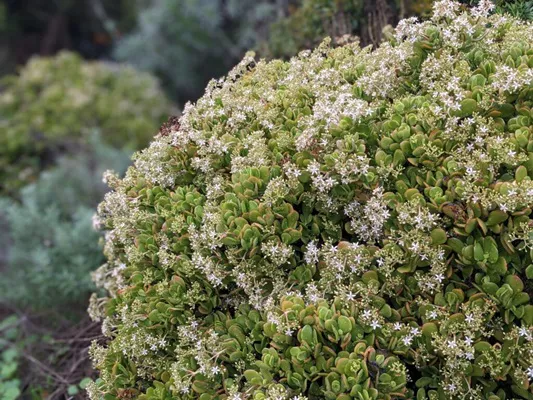Jade plants (Crassula ovata) are popular succulent houseplants. They are known for their thick, fleshy leaves and ability to survive in dry conditions. Many people grow them indoors, but where do they grow in the wild? This article will explore the natural habitat of jade plants, the climate they need, and how they survive in their native environment.
Native Habitat of Jade Plants
Jade plants grow naturally in South Africa and Mozambique. They are mainly found in the Eastern Cape province of South Africa. This region has a warm and dry climate, which is perfect for succulents like jade plants.
Jade plants are part of the Crassulaceae family, which includes many other succulent species. These plants have adapted to survive in arid regions where water is scarce. They store water in their leaves, stems, and roots to help them survive long periods without rain.
Climate and Environment
The natural habitat of jade plants is characterized by warm temperatures and low rainfall. These plants thrive in:
- Semi-arid to arid regions: Jade plants grow in places with dry conditions and occasional rainfall. They can withstand droughts because they store water in their leaves.
- Mild winters and hot summers: They prefer temperatures between 50°F (10°C) and 85°F (29°C). They do not tolerate extreme cold and can be damaged by frost.
- Well-drained, rocky soils: In their natural habitat, jade plants grow in sandy or rocky soil that drains well. This prevents their roots from rotting.
- Full sun to partial shade: Jade plants usually grow in open areas where they get plenty of sunlight. However, they can also be found in the shade of larger plants or rocks.
How Jade Plants Survive in the Wild
Jade plants have many adaptations that help them survive in their natural habitat. These include:
- Water storage: Their thick leaves store water, allowing them to survive long dry periods.
- Crassulacean Acid Metabolism (CAM): This is a special photosynthesis process that helps them save water. They open their stomata (tiny pores on leaves) at night to take in carbon dioxide and store it for use during the day.
- Drought resistance: Their roots are shallow but spread wide to absorb as much water as possible when it rains.
- Sun tolerance: They can handle strong sunlight but may develop red or purple edges on their leaves as a protective response.
Threats to Wild Jade Plants
Although jade plants are hardy, they face some threats in their natural habitat:
- Habitat loss: Urban development and agriculture are reducing their native growing areas.
- Overharvesting: Some people collect wild jade plants for sale, which can reduce natural populations.
- Climate change: Changes in rainfall patterns and temperature may affect their survival.
Conclusion
Jade plants grow naturally in South Africa and Mozambique, mainly in dry, rocky areas with warm temperatures. They have adapted to survive harsh conditions by storing water and using a unique photosynthesis process. While they are popular as houseplants, it is important to protect their natural habitat to ensure their continued survival in the wild. Understanding where jade plants come from can help gardeners and plant lovers care for them better and appreciate their natural beauty.
Related Topics:


